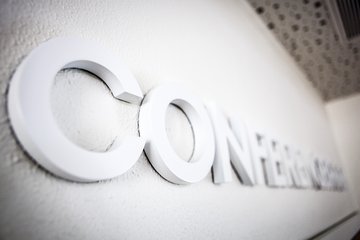
We speak of “the contemporary” and of “contemporary art”. During the past decades, we have gradually replaced the term “modern art” – and for a period “postmodern art” – with “contemporary art” as descriptor of the art of our historical present. This can for instance be detected in the fact that a large part of art museums and newly established biennials define themselves as institutional agents of “contemporary art” rather than “modern art”. But what do we mean by “contemporary”? Does the contemporary contemporary differ from the contemporary of the fifties? Is the present present of another quality than the past presents? In other words: Has something happened in our relation to time, the ways in which we exist in time, and the way in which our conception of time relates to our conception of art?
With the accelerated globalization, the concomitant ubiquitous influence of digital culture and spread of neoliberalism within the last 25 years, disparate cultures and art worlds have become interconnected and con-temporaneous with each other. There are many different co-existing ways of being in time and belonging to it. Thus, while being increasingly aware of being in the present, we are becoming attentive to other kinds of time. As a consequence, we seem to be living in an expanded present, but how far back – and forth – in time does the durational extension of our present reach? What is the role of the media and communication technology in the interconnection of times and life worlds? How does this contemporaneity – this coming together of different temporalities or “times” – that defines our historical present relate to contemporary art? And how is it experienced?
At this AIAS colloquium these questions will be discussed by philosopher Peter Osborne and art historian and theorist Terry Smith, who are leading international forces in the development of critical concepts of contemporary art and contemporaneity. Across many differences an important point of agreement in their theoretical work is to consider contemporaneity as the condition of contemporary art.
Aarhus Institute of Advanced Studies (AIAS), Aarhus University, Buildings 1630-1632, Høegh-Guldbergs Gade 6B, 8000 Aarhus C, Denmark. See location on a map.
Monday 3 November
Tuesday 4 November
PETER OSBORNE: CONTEMPORANEITY AND THE BIENNIAL FORM
What happens to the form of the biennial when biennials become part of a world system of art institutions, subject to the historical temporality of a global contemporaneity? In particular, what happens when the periodic rhythms of national narratives of biennial exhibitions are overcoded by a serial sequence of international biennials – competing for contemporaneity – seemingly without end?
TERRY SMITH: DEFINING CONTEMPORANEITY; IMAGINING PLANETARITY
If the contemporaneity of difference seems the most striking characteristic of contemporary life today, its conceptual structure continues to elude definition. The same lack of clarity attends a frequently evoked parameter for the most desired resolution of such volatile differences: a cohesive, consensual world picturing, sometimes named “planetarity.” My overall project is a close examination of these two concepts, aimed at finding productive connections between them. Previous attempts to think them, from the confessions of St Augustine to the New York Times columns of Thomas Friedman, reveal a plethora of illuminating insights, but the overall record reveals that both concepts remain inadequately imagined for current circumstances. Temporality and world-being seems to constellate around these concepts: contemporaneity, history, decoloniality, connectivity, artworlds, and planetarity. How might the contemporaneity of difference and the embattled yet emergent planetary commons be imagined in terms appropriate to present need –that is, as contemporaneous, differential and convergent? While this question is obviously of the broadest relevance, my specific goal within the history and theory of art and architecture is to articulate the conceptual structure underlying my recent accounts of the relationships between contemporary art and architecture and contemporary life.
TERRY SMITH is Andrew W. Mellon Professor of Contemporary Art History and Theory at the University of Pittsburgh. Smith’s most recent books include The Architecture of Aftermath (2006); (ed.) Contemporary Art + Philanthropy (2007); with Nancy Condee and Okwui Enwezor (eds.), Antinomies of Art and Culture: Modernity, postmodernity and contemporaneity (2008); What is Contemporary Art? (2009); Contemporary Art:World Currents (2011 and 2012); Thinking Contemporary Curating (2012); and Sodobna Umetnost in Sodobnos: Zbirka Esjeci [Contemporary Art and Contemporaneity: Collected Essays] (2013).
Website: http://www.terryesmith.net/web/
PETER OSBORNE is Professor of Modern European Philosophy and Director of the Centre for Research in Modern European Philosophy (CRMEP) at Kingston University London. He is also an editor of Radical Philosophy. His most recent books include The Politics of Time: Modernity and Avant-garde (1995; 2011); Conceptual Art (2002); How to Read Marx (2005); (ed.) Walter Benjamin: Critical Evaluations in Cultural Theory (3 Vols, 2005); El arte más allá de la estética. Ensayos filosóficos sobre arte contemporáneo (2010); with Éric Alliez (eds.), Spheres of Action: Art and Politics (2013); and Anywhere or Not at All: Philosophy of Contemporary Art (2013).
Website: http://fass.kingston.ac.uk/faculty/staff/cv.php?staffnum=735